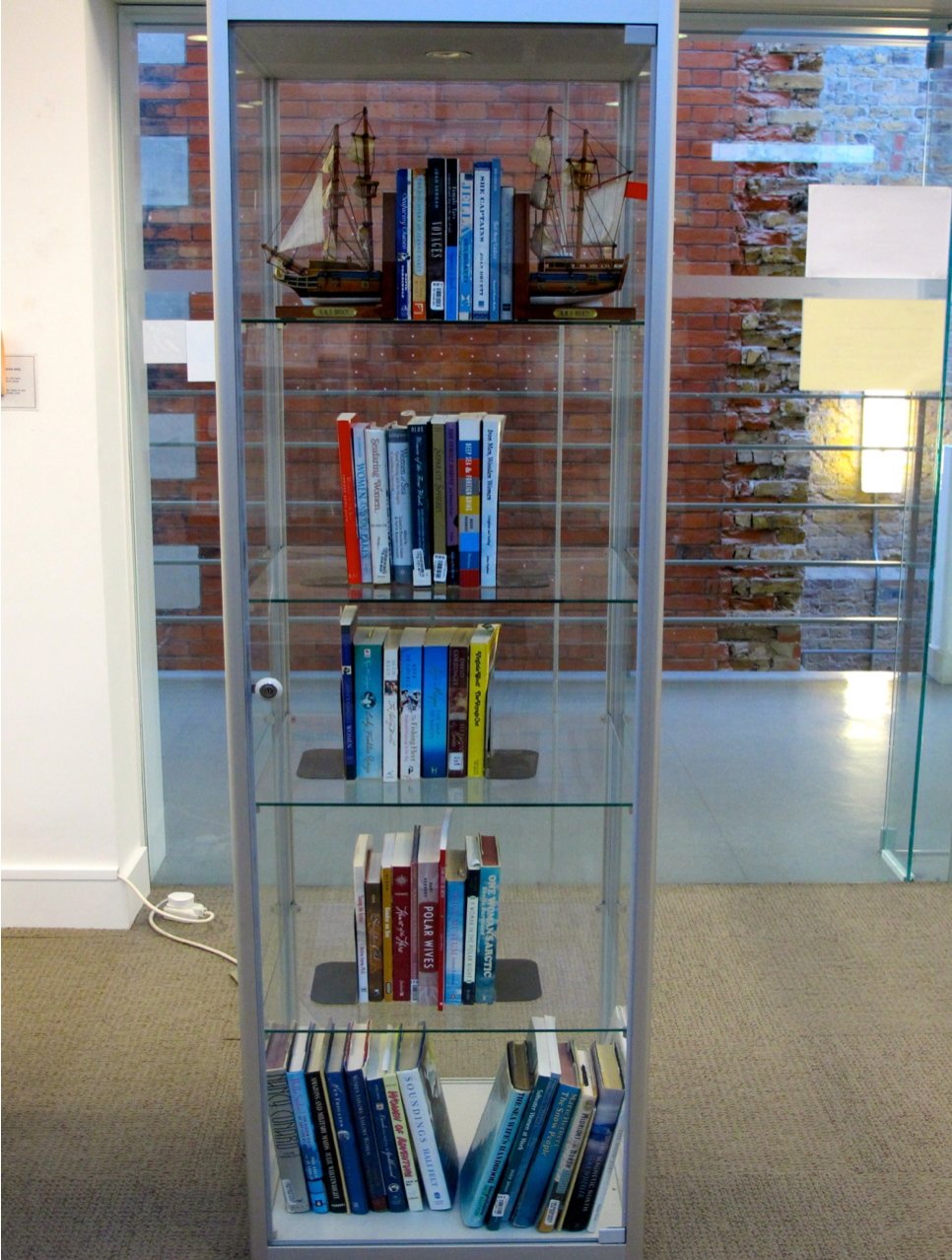Chelsea Library Exhibition (2015)
I applied to the library at Chelsea College of Art for an exhibition to share my research and to exhibit my growing Archive of books on women in maritime history. For security reasons the books were to be encased in vitrines or glass shelving cases. As there were over eighty books in the Archive it was only possible to display some of the books at any one time. I would therefore select themed display for a week and then change the display. Thus over a four week period there were four displays.
The following is a list of the themed displays of some my Archive of books.
Women on canals: (Wilkes:2011); (Smith:2009); (Woolfit:2001); (Rolt:1998); (Freer:1995); (Stewart:1993)
Women’s diaries/ journals: (Paravosomo-Gebert:2001); (Norling:2000); (Adam-Smith:1995); (Hawkins:1988); (Penny:1987):
Women disguised as men: (Ridley:2010); (Stanley:2002); (Wheelwright:1989):
Women explorers: (Herbert:2013); (Colman:2006); (McLean:2003); (McLoone:1997); (Olds:1985); (Boyd: 1948); (Wooton De Long:1938):
Women pirates: (Snell:Lacey:Talbot:2008); (Sjoholm:2004); (Klausmann:1997); (Stanley:1995):
Women/ prostitutes: (Rees:2002); (Stark:1998):
Women and whaling: (Creighton: 1995); (Druett:2001); Druett:1992); (Norling:2000); (Culley:1985):
Wives[1] who sailed: (Lincoln:2011); (Dempsey:1998); (Druett:1998) (Druett:1995):
Women who sailed/ voyaged: (Fontenoy:2012); (Ashcroft:2003); (Lutz:2003); (MacArthur:2003); (Creighton:1996); (Druett:1996); (Birkett:1992); (Skogan,1992)(Talley:1990); (Clare:1981); (Freehand:1981); (James:1979); (Walker:1973); (Davison:1956); (Brassey:1879)
The books (along with the withdrawn books and my artists book WITHDRAWN) were all displayed in glass vitrines and changed regularly in order to maximize the number of books shown over a period of three weeks. The response was really positive from the librarians and in particular a student from the Curating Course at Chelsea who wrote her MA dissertation on my collection of books.
I used model ship bookends, symbolising the masculine space of the ship, to hold a selection of books of women’s voyages. I had not made the connection at the time but it was the discovery that these replica model ship bookends were of the HMS Bounty[2]. This provided an unexpected research link to the artist Mabel Nicholson[3] (né Pryde) who used the model ship HMS Pandora in her painting Family Group. This discovery provided a vital connection to Nicholson’s painting and contributed to my ongoing gendered maritime research in particular with regard to the representation of the ship as a socially and culturally accepted masculinised space
My collection of books in Chelsea Library


